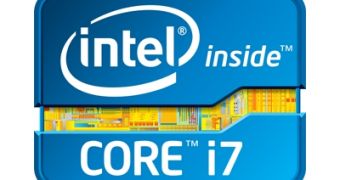Before there's any chance for people to have a panic attack, let us just say that Intel hasn't delayed the Ivy Bridge CPU line again and that there is nothing “broken” in the architecture itself.
What we mean by “broken CPUs” is that percentage of chips that don't come out quite right from the assembly lines.
Not much can be done about the low-end models, but the higher-end ones, with more cores, can be repurposed as lesser ones.
According to VR-Zone, Intel will be (and probably already is) repurposing lots of CPUs, this being one of the reasons for the Ivy Bridge delay reported in February.
In fact, many of the lesser models will be modified higher-end ones. Intel could just throw all the bad ones away, but it would be too expensive to do so.
There are seven different Ivy Bridge CPU configurations that Intel decided on for the next-generation chip collection.
The initial launch will include 4+2 (quad-core with GT2 graphics core) and 4+1 models (quad-core with a GT1 graphics core).
Not all 4+2 chips come out of the production lines in perfect shape, so Intel will “harvest” them for more 4+1 parts.
In other words, an Intel Core i7-3770 could become a Core i5-3570 by disabling half the GPU execution units and 0.5MB of cache per core.
What is really complicated is the dual-core CPU creation though. Intel will have 2+2 and 2+1 models, which have their own assembly lines or can be made from “failed” higher-end ones.
There's a trick to it though: 2+2 chips can only come from 4+2 ones, while 2+1 CPUs can be made from 4+2, 4+1 and even a failed 2+2 if the need arises.
Intel will still launch Ivy Bridge in June, but many of the lesser models will be available in Q4, or Q3 if things go particularly well. A capital F denotes the “harvested” CPUs (4+1F, 2+1F, etc.).

 14 DAY TRIAL //
14 DAY TRIAL //